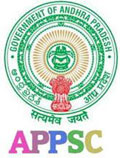APPSC Group-III (Panchayat Secretary) Revised Syllabus
Sakshi Education

Group-III Scheme of Exam
Screening Test Syllabus
Syllabus for Mains
PAPER –I: General Studies and Mental Ability
PAPER – II: (Rural Development & Problems in Rural Areas with special reference to Andhra Pradesh)
| Papers | Subject/Name of the Test | No. of Questions | Max. Marks | Duration |
|
| Screening Test | 150 | 150 | 150 minutes |
|
| Main Exam |
|
|
|
| Paper-I | General Studies & Mental Ability | 150 | 150 | 150 minutes |
| Paper-II | Rural Development and Problems in Rural Areas with special | 150 | 150 |
150 minutes |
|
| Total | 300 | 300 |
|
Screening Test Syllabus
- Current affairs- international, national and regional.
- Basics of General Science and their relevance to the day to day life. Current developments in science, technology and information technology
- History of Modern India with emphasis upon Indian national movement.
- Economic development in India since independence.
- Logical reasoning, analytical ability and data interpretation.
- over view of Indian Constitution.
- Bifurcation of Andhra Pradesh and its Administrative, Economic, Social, Cultural, Political, and legal implications/problems.
- Evolution of Panchayat Raj system in India including Constitutional amendments and reports of Various Committees.
- Evolution of Panchayat Raj system in Andhra Pradesh
- Key Schemes of Panchayat Raj Department of A.P
- Rural Economy of Andhra Pradesh: Agriculture, Small scale Industries Rural artisans.
- Rural Credit Scenario of Andhra Pradesh: Role of Banks, co- operatives and Micro Finance.
- Women Empowerment and Economic development through Self Help Groups.
Syllabus for Mains
PAPER –I: General Studies and Mental Ability
- Events of national and international importance.
- Current affairs- international, national and regional.
- Basics of General Science and their relevance to the day to day life. Current developments in science, technology and information technology
- History of Modern India with emphasis upon Indian national movement.
- Economic development in India since independence.
- Logical reasoning, analytical ability and data interpretation.
- Basic things about Disaster management (CBSE-VIII & IX Standard).
- Geography of India with focus on A.P
- over view of Indian Constitution.
- Sustainable Development and Environmental Protection.
- Bifurcation of Andhra Pradesh and its Administrative, Economic, Social, Cultural, Political, and legal implications/problems, including
a). Loss of capital city, challenges in building new capital and it’s financial implications.
b). Division and rebuilding of common Institutions.
c). Division of employees, their relocation and nativity issues.
d). Effect of bifurcation on commerce and entrepreneurs.
e). Implications to financial resources of state government.
f). Task of post-bifurcation infrastructure development and opportunities for investments.
g) Socioeconomic, cultural and demographic impact of bifurcation.
h) Impact of bifurcation on river water sharing and consequential issues.
i). AP REORGANISATION ACT, 2014 on AP and the arbitrariness of certain provisions.
PAPER – II: (Rural Development & Problems in Rural Areas with special reference to Andhra Pradesh)
- Evolution of Panchayat Raj system in India including Constitutional amendments and reports of Various Committees.
- Evolution of Panchayat Raj system in Andhra Pradesh
- Roles and responsibilities of Panchayat Secretary
- Rural Sociology: History and Evolution of schemes catering to upliftment of Rural Poor
- Flagship Rural Development schemes of Rural Development Department of Government of India and Andhra Pradesh
- Key Schemes of Panchayat Raj Department of A.P
- Rural Economy of Andhra Pradesh: Agriculture, Small scale Industries, Rural artisans
- Rural Credit Scenario of Andhra Pradesh: Role of Banks, co-operatives and Micro Finance
- Community Based Organisations and convergence of Welfare Schemes
- Women Empowerment and Economic development through Self Help Groups
- Revenue and Expenditure Management of Local Bodies
- Accounting and administering funds received under various schemes.
Published date : 08 Jul 2016 10:35AM













